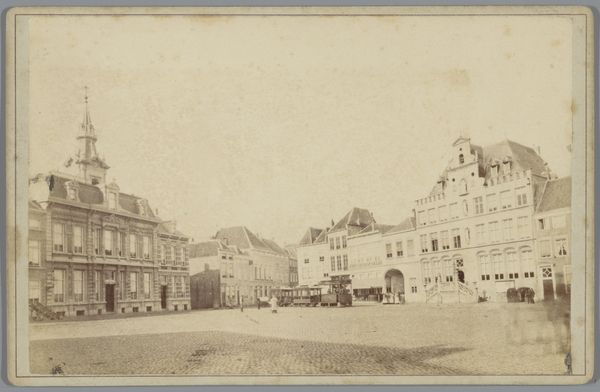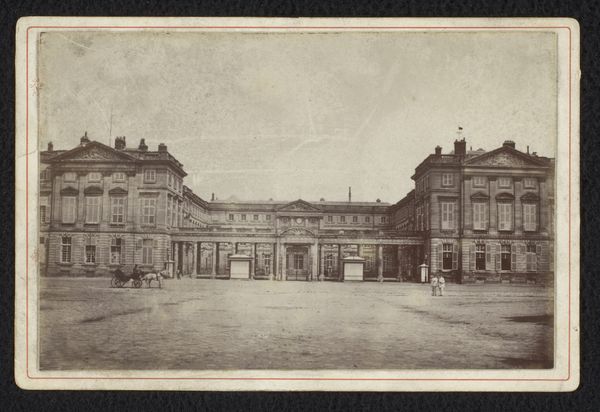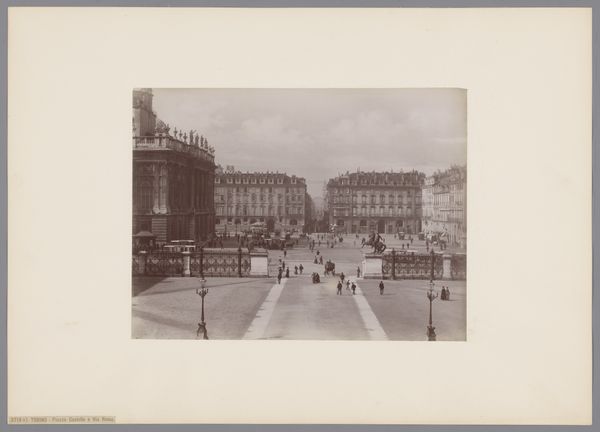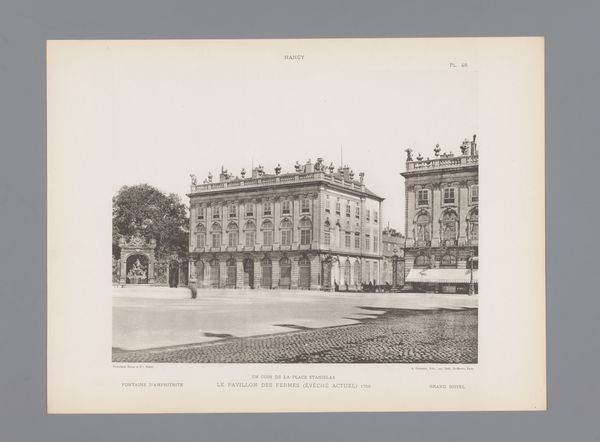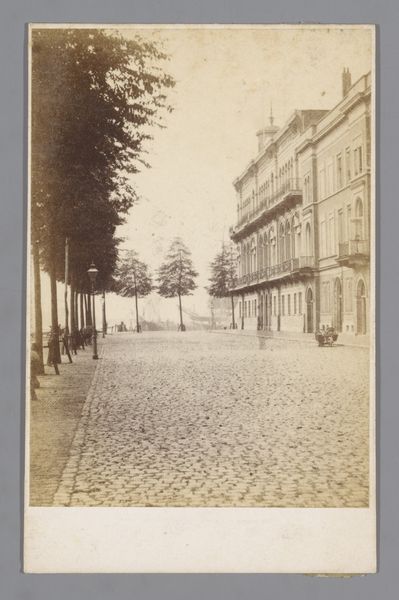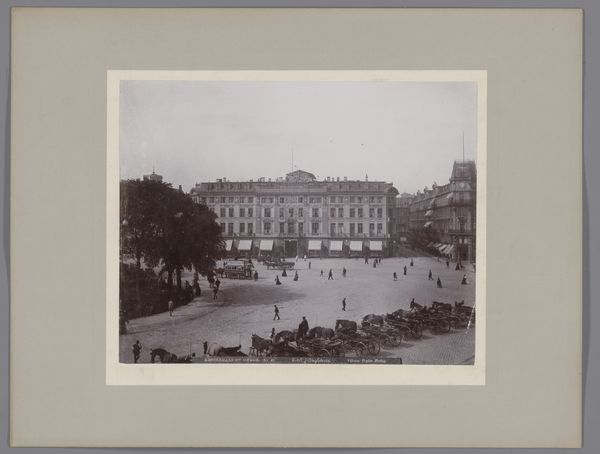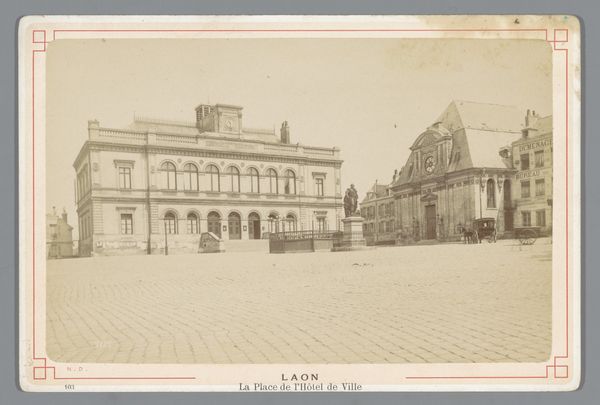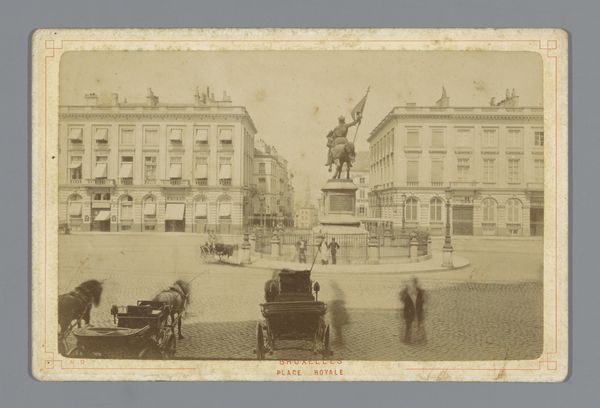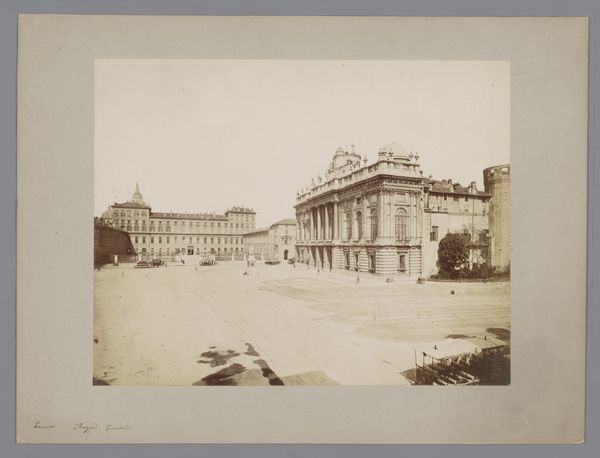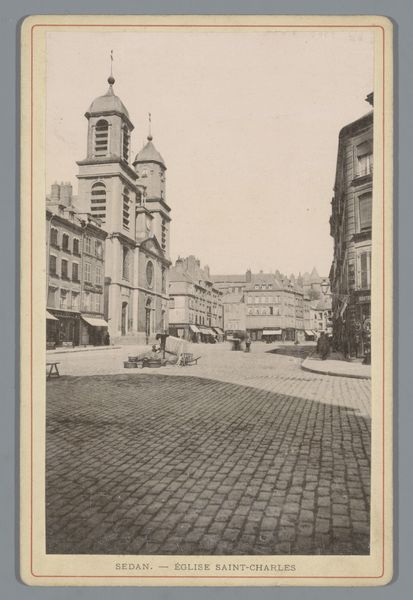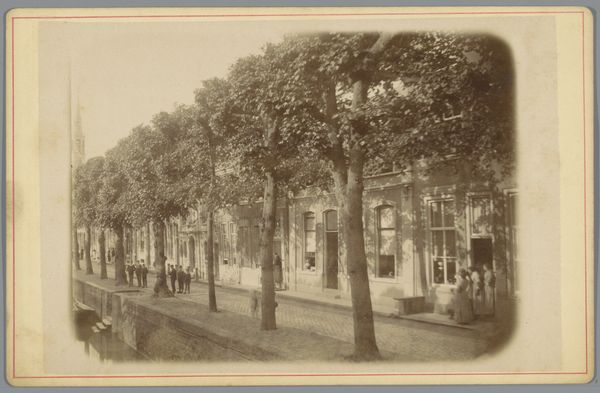
Dimensions: height 108 mm, width 163 mm
Copyright: Rijks Museum: Open Domain
Curator: This is a photograph entitled "Gezicht op La Place Stanislas te Nancy" from sometime between 1870 and 1900 by Étienne Neurdein, likely an albumen or gelatin silver print. My initial response is a sense of imposed order, even sterile beauty; that symmetry and the formal balance is undeniable. Editor: Sterile is the word, I'd agree. But beyond its formal symmetry, I’m struck by the sheer labor embedded in constructing this public space and then in capturing it. Think of the quarrying, the transport of stone, the craftspeople shaping the wrought iron, the photographer with the bulky equipment and glass plate negatives. Curator: The architectural language screams neoclassicism. Note the restrained ornamentation, the emphasis on rationality and proportion, and the clear articulation of forms. The layout encourages one's eye to wander systematically, according to the intentions of the photograph and not spontaneously. Editor: But what does that rationalized space and its documentation *do*? Place Stanislas was conceived and constructed in service to the monarchy, for King Stanislas Leszczyński. Even in Neurdein’s photograph, decades later, that history of power—built and recorded—still resonates. It serves a material reminder of hierarchical control. Curator: An interesting viewpoint. And that might well have influenced Neurdein’s compositional choices. The framing gateways aren’t merely decorative, they establish a visual hierarchy within the image itself, funneling our gaze and emphasizing that predetermined structure, and one man in the center. Editor: And yet, looking again, I'm also drawn to the textures - the rough-hewn cobblestones contrasting with the smooth facades of the buildings. How different this square must feel on foot. Consider the workers, the market vendors who animate the stone. We see traces of life interrupting, but never entirely dispelling, the intentions of those formal ideals of perfect space. Curator: It's true; even in its apparent stillness, the image hints at movement, temporality. It's a carefully constructed representation attempting to freeze a specific cultural moment in time, holding to ideas of progress. Editor: Exactly. A grand, still moment built with enormous effort—and also perpetually becoming something else. It makes one curious to trace its shifting utility over the century after this photo was taken.
Comments
No comments
Be the first to comment and join the conversation on the ultimate creative platform.
